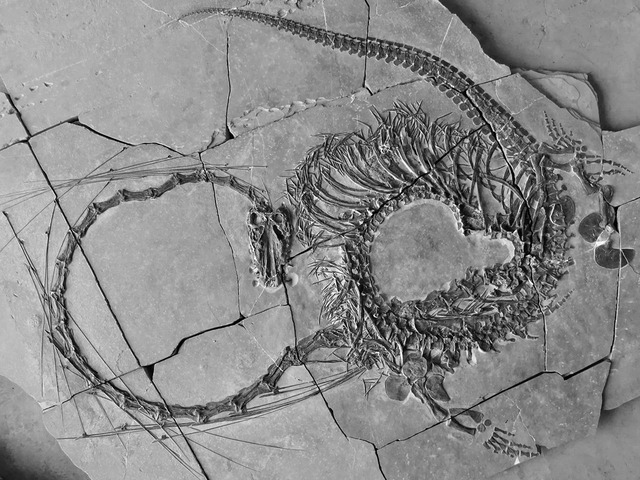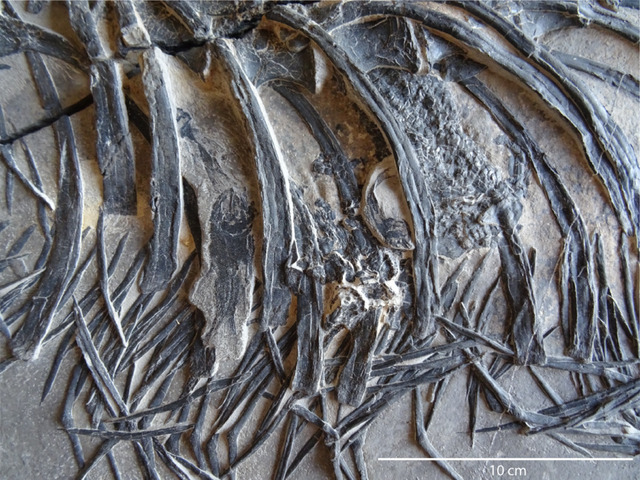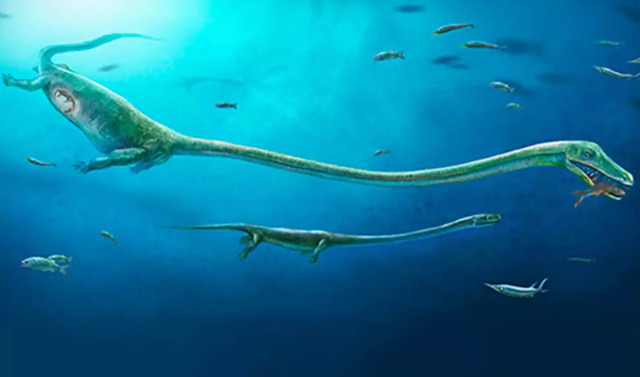The discovery of Dinocephalosaurus orientalis, a 240-million-year-old marine reptile, has captivated scientists and fossil enthusiasts alike. Unearthed in Guizhou Province, China, this ancient creature, often referred to as the “Chinese dragon,” provides an extraordinary glimpse into the Triassic period’s marine ecosystem. With its long, serpentine neck and unique adaptations, Dinocephalosaurus offers invaluable insights into the evolution of marine reptiles and their ecological roles.
The Fossil Discovery: Bringing the Chinese Dragon to Light
The remarkable fossil of Dinocephalosaurus orientalis was discovered in China’s Guizhou Province and meticulously studied by an international team of researchers. Initially found in fragments in 2003 by Professor Li Chun from the Institute of Vertebrate Paleontology and Paleoanthropology in Beijing, the fossil has since been reconstructed to reveal the complete anatomy of this enigmatic creature. The study, published in the Earth and Environmental Science: Transactions of the Royal Society of Edinburgh, represents a breakthrough in understanding Triassic marine life.

This well-preserved fossil, stretching from the tip of its snout to its tail, allowed scientists to finally depict the animal in its entirety. The elongated neck, a striking feature with 32 vertebrae, stands out as one of its most intriguing adaptations. This neck, combined with flipper-like limbs, indicates that Dinocephalosaurus was highly specialized for life in the ocean.

Anatomical Features and Adaptations
The anatomy of Dinocephalosaurus orientalis showcases its unique evolutionary path. Its extraordinarily long neck is unparalleled among modern animals, hinting at a specialized function. Dr. Nick Fraser, Keeper of Natural Sciences at the National Museums Scotland, suggested that the creature may have used its neck to probe into rocky crevices in search of prey. The flippered limbs, along with the fossilized remains of fish in its stomach, confirm its piscivorous diet and its adaptation to an aquatic lifestyle.
Despite its superficial resemblance to long-necked plesiosaurs, Dinocephalosaurus is not closely related to them. Instead, it shares a lineage with Tanystropheus hydroides, another ancient marine reptile known for its elongated neck. This connection highlights the diversity of evolutionary strategies among marine reptiles during the Triassic period.
Scientific Implications of the Discovery
Understanding Its Lifestyle
The discovery of Dinocephalosaurus opens up new possibilities for understanding the lifestyles of Triassic marine reptiles. The long neck, though visually striking, poses many unanswered questions. Did it serve as a tool for ambushing prey, or was it an adaptation for navigating specific environments? The well-preserved fossil provides clues, but further research is needed to unravel the creature’s behavioral patterns fully.
The presence of fish remains in the stomach suggests Dinocephalosaurus occupied a niche as a predator in the ancient seas. Its flippered limbs and streamlined body likely made it an efficient swimmer, capable of navigating both shallow and deep waters. However, its exact role within the marine ecosystem remains a topic of ongoing investigation.

Insights Into Evolution
Dinocephalosaurus sheds light on the evolutionary pathways of marine reptiles, particularly during the Triassic period. The unique combination of features—elongated neck, flippered limbs, and specialized hunting adaptations—demonstrates the diversity of evolutionary strategies employed by marine reptiles to thrive in their environments. Dr. Stephan Spiekman, a postdoctoral researcher involved in the study, emphasized the potential for further research to illuminate the evolutionary trajectory of this fascinating group of animals.
Collaborative Research and Future Studies
Key Researchers and Their Contributions
The discovery and analysis of Dinocephalosaurus were made possible through the efforts of a dedicated team of international researchers. Dr. Nick Fraser played a pivotal role in interpreting the fossil’s anatomy and ecological significance, while Professor Li Chun’s initial discovery laid the foundation for subsequent studies. Dr. Stephan Spiekman’s emphasis on evolutionary research highlights the importance of continued collaboration in uncovering the secrets of ancient marine life.
Ongoing Questions
While the Dinocephalosaurus fossil has answered many questions, it has also raised new ones. The exact purpose of its elongated neck remains speculative. Was it primarily a hunting adaptation, or did it serve other functions, such as courtship or environmental navigation? Future research, including biomechanical modeling and further fossil discoveries, will be essential in addressing these mysteries.

The Legacy of Dinocephalosaurus
The discovery of Dinocephalosaurus orientalis is more than just a fascinating glimpse into the past—it is a testament to the power of science and international collaboration in unraveling Earth’s prehistoric history. This “Chinese dragon” reminds us of the incredible diversity of life that once thrived in our oceans and the evolutionary marvels that emerged during the Triassic period.
As scientists continue to study this remarkable fossil, we are likely to gain even deeper insights into the ancient world and the evolutionary processes that shaped it. Dinocephalosaurus orientalis stands as a symbol of the enduring quest for knowledge and the unending wonder of discovery.
